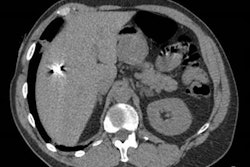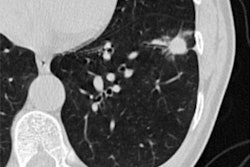Monday, November 28 | 10:00 a.m.-10:30 a.m. | M3-STCE-3 | Learning Center Theater
Photon-counting CT could improve the image quality of pediatric chest exams compared with conventional CT -- without increasing radiation dose, a group from Duke University in Durham, NC, has found.Presenter Dr. Fides Schwartz and colleagues conducted a study that included 17 children who underwent contrast-enhanced chest CT exams that targeted the venous phase with both a conventional scanner and a photon-counting detector device. The group tracked radiation dose per scan using the volumetric CT dose index (CTDIvol) and calculated contrast-to-noise and signal-to-noise ratios for each scanner. Mean patient age was 7.
The researchers found that the mean CTDIvol was comparable between conventional CT and photon-counting CT (3.8 mGy vs. 3.6 mGy). Contrast-to-noise ratio was higher for thymus tissue on photon-counting CT, but not for pectoralis muscle. Compared with conventional CT, signal-to-noise ratio was higher on photon-counting CT in thymus tissue and pectoralis muscle.
What do these results suggest? Photon-counting CT offers "better quantitative image quality at similar radiation doses than conventional energy-integrating CT for pediatric chest imaging with intravenous contrast," the group concluded.
You can see for yourself by sitting in on this Monday morning presentation.





















